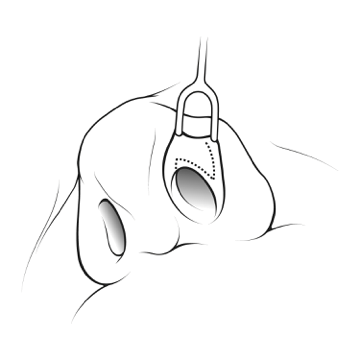Introduction
The term rhinoplasty refers to surgery performed to make changes to external structures of the nose. This may be performed for purely cosmetic reasons (to improve the appearance). It can also be performed to improve the ability to breathe through the nose. In this case, the surgery is more referred to as a functional rhinoplasty or nasal valve repair. This is separate from a septoplasty, which involves only repair of the wall that divides the nasal cavities. It is also different from a cosmetic rhinoplasty, which is only concerned with the appearance. A functional rhinoplasty typically involves repair of the nasal valves. This is the medical term for the collapsible portions of the nostrils. These can be congenitally narrow, collapse with age, or become scarred from surgery or trauma. Surgery on the nasal valves is mainly performed to improve breathing. However, it can sometimes change the appearance of the nose.
Indications The common indications for a functional rhinoplasty include narrowing, collapse or stenosis of the nasal valves (nostrils) that causes nasal obstruction as a result of:
- Birth defect (congenital)
- Tumor (congenital or acquired)
- Nasal injury or trauma (acquired)
- Infection (acquired)
Procedure
A functional rhinoplasty may be performed under different types of anesthesia. This depends on patient and physician preference. It includes local anesthesia (i.e. patient awake but with “numbing medications”), intravenous sedation (i.e. “twilight”) or general anesthesia (completely asleep). Incisions are made to allow access to the underlying cartilage and bone. These incisions can be hidden completely inside the nostrils (closed) (See Figure 1). They can also involve internal incisions combined with a tiny incision through the skin at the base of the nose (open).

Often cartilage and/or bone may need to be obtained from another site to help gain support. These cartilage grafts are often taken from the nasal septum if a septoplasty is performed (See Septoplasty and Turbinate Surgery). Sometimes ear or even rib cartilage may need to be harvested. Further reshaping or grafting may need to be performed with sutures to the cartilage. Osteotomies are deliberate fracturing of the nasal bones. This may be performed to straighten the nasal bones if they are crooked or deformed. Cartilage grafting remains the most common type of functional rhinoplasty. Other procedures to reshape the nostrils (ex: a “z-plasty”) or suspend the nasal tissues can also be performed. Absorbable implants are now available as a minimally invasive method to open the nasal valves.
At the end of the procedure, the outside of the nose is often taped and some form of external cast may be applied. Plastic sheets may be temporarily placed inside the nose. Actual nasal packing is usually avoided.
Risks
Studies have shown that most functional rhinoplasty heal without serious problems. The majority of patients can breathe better and enjoy an improved quality of life. However, there are potential complications that every patient should be made aware. These include (but are not limited to):
- Complications of anesthesia
- Epistaxis (nosebleed)
- Septal perforation (hole in internal wall of the nose)
- Unsatisfactory appearance
- Need for revision surgery
- Infections
- Worsened (rather than improved) nasal breathing
Benefits
An improvement in nasal breathing is the primary benefit of a functional rhinoplasty. This can also improve the sense of smell, sleep, and other quality of life factors. The procedure may also straighten the nose, repair deformities and improve appearance.
Summary
A functional rhinoplasty is a procedure to improve the function of the external nose. This may involve a great range of techniques. It depends on the patient’s goals, the anatomic problems, and surgeon’s preferences. The procedure may be done as a primary surgery or revision surgery. It may involve cartilage grafting. The recovery time may vary depending on the severity of the problem. Patients should enter into a discussion with their surgeon with specific goals in mind. They should understand the procedure itself, its risks and its benefits after consulting with their surgeon. They should understand that the surgery may alter the appearance of the nose to some extent.
Copyright © 2020 by the American Rhinologic Society
